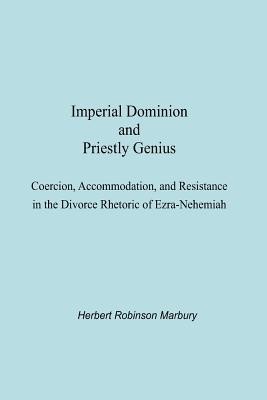
- We will send in 10–14 business days.
- Author: Herbert Robinson Marbury
- Publisher: Sopher Press
- Year: 2012
- Pages: 144
- ISBN-10: 193594603X
- ISBN-13: 9781935946038
- Format: 15.2 x 22.9 x 0.9 cm, softcover
- Language: English
- SAVE -10% with code: EXTRA
Reviews
Description
During the fifth century BCE, the Persian Empire ruled Jerusalem and the province of Yehud. In these years, the Jerusalem priesthood constructed a rhetoric about divorce in Ezra 9-10 and Nehemiah 10 and 13. Herbert Robinson Marbury shows that these priests deliberately presented vastly different messages to the Persian imperial authorities and the community of the Second Temple. At political, cultic, and economic levels, the rhetoric's meanings both affirmed the empire and participated in countercultural resistance. Marbury explains how the divorce rhetoric of Ezra-Nehemiah forms counter-narratives of resistance for literate elites as they maintain the religious and cultural integrity of the Second Temple community.
EXTRA 10 % discount with code: EXTRA
The promotion ends in 20d.17:42:45
The discount code is valid when purchasing from 10 €. Discounts do not stack.
- Author: Herbert Robinson Marbury
- Publisher: Sopher Press
- Year: 2012
- Pages: 144
- ISBN-10: 193594603X
- ISBN-13: 9781935946038
- Format: 15.2 x 22.9 x 0.9 cm, softcover
- Language: English English
During the fifth century BCE, the Persian Empire ruled Jerusalem and the province of Yehud. In these years, the Jerusalem priesthood constructed a rhetoric about divorce in Ezra 9-10 and Nehemiah 10 and 13. Herbert Robinson Marbury shows that these priests deliberately presented vastly different messages to the Persian imperial authorities and the community of the Second Temple. At political, cultic, and economic levels, the rhetoric's meanings both affirmed the empire and participated in countercultural resistance. Marbury explains how the divorce rhetoric of Ezra-Nehemiah forms counter-narratives of resistance for literate elites as they maintain the religious and cultural integrity of the Second Temple community.


Reviews